How to grow a Venus flytrap from seeds and properly care for it
Predatory plants arouse great curiosity and interest in people. This is because they are unusual and very attractive looking. One of them is the Venus flytrap - a predatory exotic plant, wild forms of which grow on the swampy coast of the Atlantic Ocean.
Indoor gardeners all over the world want to get this flower for growing. But is it possible to grow a Venus flytrap from seeds? You will find answers to this and other questions about flower care by reading this material.
What is this flower
This plant has been known to people for 300 years. The study of this insect hunter began in the 18th century. The flower has several names. One of them he received for his attractiveness in honor of Dionea, who was the mother of the beautiful Aphrodite.
People at all times have tried to introduce this miracle of nature into the potting culture. When it became clear what conditions were needed for growing Dionea at home, she began to decorate the windowsills of many houses. The flower in the apartment has 2 important functions. Due to its decorative effect, it decorates the room. In addition, it relieves the owners of annoying mosquitoes and flies.
Description and characteristics
Venus flytrap, or dionea, is a genus of carnivorous plant. Wild forms of it are found on the Atlantic coast of the United States. Grows on marshy, moist soils. Swampy peatlands contain little nitrogen, but this is not a problem for Dionea, since she receives this nutrient from her victims.
The species is represented by stunted herbaceous forms that do not have a trunk. The plant has a short underground stem, from which grows from 4 to 7 leaves, collected in a rosette.
The length of the leaves ranges from 3.5 to 7 cm. Outwardly, they look like traps with thorns along the border. The color of the leaves is light green, and their inner surface is painted in red tones. They give off an odor that attracts insects. In addition, the leaves produce special enzymes that help digest the caught insects.
The insect trap is made up of 2 sheets, which have hairs along the edge for a stronger adhesion to each other when the trap is slammed shut. The insect, attracted by the smell of nectar, lands on the inner petals. This irritates special signal hairs, and the trap quickly closes.
When the lobes of the leaves are completely closed, a cavity is formed with the function of the stomach. The extracted food is digested and assimilated in this cavity. It takes 7-10 days. Then the trap opens again and the plant is ready to capture the next victim. In the natural environment, the Venus flytrap preys on insects and molluscs. Each trap can catch and digest 3 victims, and then it dies off.
With the onset of winter, the appearance of the Dionea changes. Its leaves are dying off and it seems that the flower has died. However, with the appearance of the first rays of the sun, the predatory plant comes to life again and prepares to hunt. Under good conditions, Dionea can live for 20 years.
Is it possible to grow it at home
Ever since humanity discovered this wonderful flower, attempts have been made to introduce it into culture. Over time, it became clear what conditions were needed for growing Venus flytrap on windowsills.Now dionea can be found in many homes where it grows successfully.
Optimal growing conditions
Dionea is very sensitive to inappropriate growing conditions. When growing it at home, it is necessary to carry out all the care work in a timely manner and create a comfortable microclimate. Further, it is described what requirements a predatory plant makes for normal development.
- Lighting. The light should be bright enough, but diffused. The sun's rays in this form should fall on the flower within 5 hours, mainly in the morning and in the evening. The root system of the Venus flytrap can overheat from the sun. To prevent this, the pot is wrapped in reflective material. With a lack of light, the leaves turn pale, and the plant stretches out. The problem can be solved by installing additional lighting with fluorescent lamps.
- Place for the pot. Dionea grows best on the windowsills of east or west windows. If there is no such possibility of placement, and the windows of the apartment face south, it does not matter. Place the pot on a south window and provide shade. Dionea does not react well to movement, so you need to immediately find a suitable place for it.
- Air exchange. Fresh air has a beneficial effect on the Venus flytrap. In the summer, you can take the flower pot out to the loggia or even to the garden. If both are not available, you need to regularly arrange ventilation, avoiding drafts.
- Indoor temperature. This genus belongs to thermophilic plants. In the warm season of the year, it is necessary to provide Dionea with a temperature range of 23-30 degrees above zero, and in winter, +10 degrees is enough.
- Irrigation. It is impossible to allow both waterlogging and drying of the soil. The top of the soil is constantly kept slightly moist. To preserve moisture, mulching with moss will not be superfluous. Irrigation is best done by the bottom irrigation method, when the calculated amount of water is poured into the sump. In extreme heat, it is necessary to humidify the air around the flower with a spray bottle.
- Rest period. In the fall, the plant falls into a dormant period. Its leaves dry out, turn black and fall off. Outwardly, the flower seems lifeless. It is not necessary to panic and take any resuscitation actions, as this is a natural process. You just need to move the pot with dionea to a dark, cool place and wait until mid-February, sometimes moistening the soil. With the arrival of spring, the active growth of the Venus flytrap will resume.
Where to get seeds
Venus flytrap seeds can be obtained independently from an adult plant or purchased from commercial horticultural centers. If your friend has a Dionea and you are going to take seeds from her for reproduction, then you have to work a lot. At home, seeds can only be grown by artificial pollination.
Getting your own seeds
In the spring, when Dionea enters the flowering phase, you need to transfer pollen from one plant to another with a paintbrush. Fertilization of the flower will occur and ovaries will appear in 30 days. The fruit of Dionea is a capsule containing from 20 to 30 black shining achenes. Ripe seeds are stored in the refrigerator in paper bags. They will become suitable for sowing 150 days after collection.
Important! A plant that has already wintered at least once is suitable for artificial propagation.
Can I order from China on Aliexpress
In recent decades, with the development of the Internet, seeds began to be ordered through the World Wide Web. In the network you can find a lot of online stores that sell seeds of vegetables, berries and exotic plants. Venus flytrap seeds can be ordered there.
One of the most popular online stores is the Chinese Aliexpress. Dionea seeds can be ordered there.However, it should be noted that sometimes those who ordered Venus flytrap seeds receive packets with completely unknown plants, and sometimes weed seeds are sent.
Preparing for landing
Not everyone succeeds in growing a Venus flytrap from seeds, since it is quite difficult. Young flowers can die due to lack of light or insufficient air humidity. Therefore, it is very important to carry out all the pre-sowing preparatory work correctly.
Cooking seeds
Regardless of which seeds are used for sowing - purchased or self-grown, they must be properly prepared before the planting procedure.
Seed material must undergo a stratification process before planting, due to which seed germination is significantly increased. The essence of stratification is as follows:
- moisten a cloth in a 1% solution of potassium permanganate;
- put dry Dionea seeds on it;
- send the seeds to the refrigerator, where the temperature is maintained from 3 to 5 degrees Celsius;
- stratification lasts 2 months and at this time you need to regularly moisten a cloth;
- by the end of the process, faint cracks will appear on the seed shells, indicating that the seeds are ready for sowing.
Choosing a place
While the seeds are stratified in the refrigerator, you need to decide on the place where the pot with dionea will be placed. For her, you should empty the sill of the western or eastern window, clean and wash it. If the windows of the house face south, then a shading screen must be prepared there, protecting the young Dionea from direct sunlight.
Cooking soil
We have already noted earlier that wild Dionea grows on marshy soils and prefers an acidic environment. This should be taken into account when preparing the soil for it yourself.
The primer must be composed of the following ingredients:
- 2 parts of peat;
- 2 parts perlite;
- 1 part moss;
- 1 part sand.
All ingredients are thoroughly mixed until smooth, and then the soil is disinfected from fungal diseases with a 1% solution of potassium permanganate.
Selecting and preparing a pot
A small pot with a diameter of 10 cm and a height of 12 cm is chosen under the dionea. Florists with experience advise growing the Venus flytrap in a special florarium or in an aquarium. It is easier to withstand the required air humidity and set up the correct lighting in them.
The drainage layer is not laid in the pots, but they are immediately filled with the prepared soil mixture.
Sowing technology
It is recommended to sow seeds after February 15 in order to transplant the seedlings into separate pots with the onset of summer.
The seeding procedure is performed according to the following algorithm:
- sow seeds on the surface of the soil, without deepening them, you can sprinkle them with moss;
- water with a spray bottle gently so as not to brush them off the surface;
- cover the pots with plastic wrap;
- maintain the background temperature at the level of 24-28 degrees Celsius;
- to supplement the crops with at least 15 hours a day;
- prevent the soil from drying out by watering.
Important! If all the items on the list are met, then the seedlings will appear in 2 or 3 weeks. The film is being removed at this time.
Further care
With the appearance of 2 true leaves on the plant, it is necessary to start hardening. This is done gradually, opening a film shelter for a short period of time. The temperature in the room at this time should not drop below +18 degrees. First, the film is opened slightly for 5 minutes, and then the exposure is gradually increased to 20 minutes.
When the Dionea has 3-5 true leaves, it is transplanted into individual pots. The transplant procedure is performed with great care, keeping in mind that the Venus flytrap has fragile roots. Dionea grows very slowly and it will become an adult plant only after 5 years.
Watering
In the process of growing the Venus flytrap, you need to constantly monitor the moisture content of the soil. Even short-term drying should not be allowed, since this is detrimental to the flower.
For moistening, it is undesirable to use overhead irrigation, because this method makes it difficult for oxygen to flow to the roots. Water should be poured into the sump so that its level is above the drain holes in the pot. The plant itself will take the required amount of moisture from the pallet.
For irrigation, it is better to use rainwater or distilled water. Watering frequency is 3 times a week.
Fertilizer
Top dressing in the form as we understand it is not made in relation to Dionea. The plant does not need root or foliar fertilization.
It is better to take care that the dionea can hunt constantly and maintain a sufficiently humid environment for her.
Feeding
The Venus flytrap is a predator that receives all the necessary nutrients as a result of the digestion of its prey.
For feeding to be successful, you need to adhere to some rules:
- It is enough to feed Dionea once a month. For the entire growing season, she needs to digest 3 insects. Mosquitoes, spiders or flies are good food.
- The size of the victim should not be larger than the size of the trap.
- For her, worms, leaf beetles and insects with a chitinous hard shell are not suitable for food.
- You can not feed the flower pieces of meat and other foods from the table.
- It is highly undesirable to feed Dionea in the following cases:
- if the flower is sick;
- when transplanting a plant;
- when the soil is waterlogged;
- in poor lighting.
Important! In late autumn and during the winter, feeding is temporarily stopped.
Transfer
After sowing the seeds, the first flower transplant is carried out 2 years later. Then this procedure is repeated with the same frequency. The best time to transplant is spring.
The transfer procedure is performed according to the rules:
- the new pot should be deep enough, but not wide, because the roots of the dionea are long enough;
- the roots of the plant are fragile, the transplant should be done slowly and carefully;
- when the Venus flytrap is removed from the pot, the soil should be removed from the roots and washed with water;
- the lean mixture, which is described above, is poured into a new pot.
After transplanting, the plant will take a month to adapt. During this period, it must be well watered and kept in partial shade.
Important! Whether Dionea needs a transplant can be determined by the state of the soil in the pot. If its top layer began to lag behind the walls and acquired a white coating, it's time to transplant.
Protection against diseases and pests
When grown at home, the Venus flytrap is rarely attacked by pests. The most common pest is aphid. She settles in traps, sucks the sap of the plant. As a result of its harmful effects, the traps are deformed and lose their functionality, the plant cannot hunt and dies. Dionea can be protected from aphids by treatment with special aerosols.
In addition, the flower can be affected by spider mites. If the air humidity is insufficient, the risk of tick damage increases. The fight against these insects is carried out by spraying with a solution of a purchased acaricide.
Due to neglect of the rules for growing Venus, the flycatcher can get sick with some diseases. Most often these are such ailments:
- Mold fungus. Occurs when the air is excessively humidified. It appears as black spots. The disease can be eliminated by treatment with a solution of a purchased fungicide.
- Rotting trap. Decay can occur when the plant is unable to completely digest the insect. It is necessary to control this process and, if necessary, manually clean the trap.
- Botrytis. With this disease, gray rot appears on the stems and leaves. To prevent the spread of the disease to other parts of the plant, the affected area should be cut out, and the plant should be sprayed with a fungicide solution.
Tips from experienced florists
When growing a Venus flycatcher, even experienced growers face formidable difficulties.In this regard, the following recommendations will be useful for beginners:
- Strict adherence to the irrigation regime. With excessive watering, dark spots appear on the shoots of Dionea, and rotting of leaves and stems begins. In the presence of such symptoms, an urgent need to adjust the irrigation regime.
- Irrigation water and fertilizing. Do not use tap water for irrigation and fertilizing with mineral fertilizers. From this, the leaves can wither, and the plant can die.
- Traps. It is strictly forbidden to touch the traps with your hands, feed the flower with products that are unsuitable for it.
- Lighting. If brown spots appear on the leaves of Dionea, this is the result of sunburn. Give the flower a semi-transparent shade.
- Rest period. As the plant enters this period, its leaves may turn white or yellow. They must be carefully pinched, this will give an opportunity for the regrowth of new shoots and leaves. During this period, it is not necessary to give the plant insects and the irrigation regime should be reduced to a minimum. The length of daylight hours and the temperature in the room should also be gradually reduced to 7-10 degrees above zero. Do not allow the potting soil to dry out even in winter.
Testimonials
Florists who have gained experience in growing the Venus flytrap note its unusualness and some difficulty in cultivation.
- Nelly, 39 years old, Kashira
“Dionea excited my imagination for many years until I finally brought home a pot with this predator. I bought it in one of the local stores for 480 rubles. Outwardly, it does not look threatening, its size is small with a few leaves. The main part of the plant consists of traps that have teeth on the edges. In the middle of these traps there are small sharp thorns. Soon I realized that it is impossible to grow such a plant without preliminary theoretical training. Before buying it, you need to think carefully and weigh everything. "
-
Semyon, 46 years old, Orenburg
"I have been growing Dionea for over a year. During this time, I realized that the main problem is not to feed the plant an extra fly. Friends come to my children and they amuse themselves by sticking their finger in a trap and watching it slam shut. . This should not be allowed, because the plant spends a lot of energy on all sorts of movements and this greatly exhausts it. "
- Olga, 54 years old, Novoorsk
"My dionea was purchased in the spring and could not survive until autumn. The store did not warn me that it should not be watered with plain water. I watered the flower through a tray with tap water, and the plant gradually began to die out. Its traps began to fade, but I did not even guess remove them. Then other parts of the plant dried up. When I dug out the pot to see the roots, the flower fell apart in my hands. The base of the leaves was completely rotted. "
As you can see, the Venus flytrap is distinguished by some complexity of cultivation and the method of obtaining nutrients. However, you can still grow it at home. You just need to adhere to the recommendations set out in this article and carry out all technological work in a timely manner and according to the rules.
Video instruction for germinating seeds:



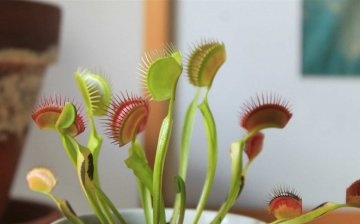
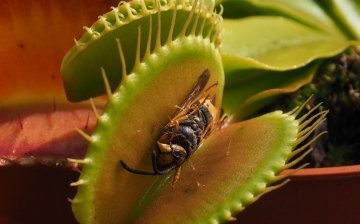






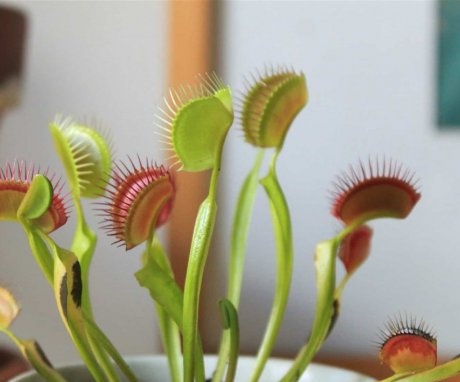
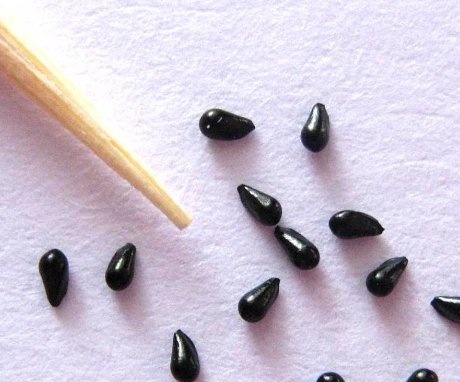
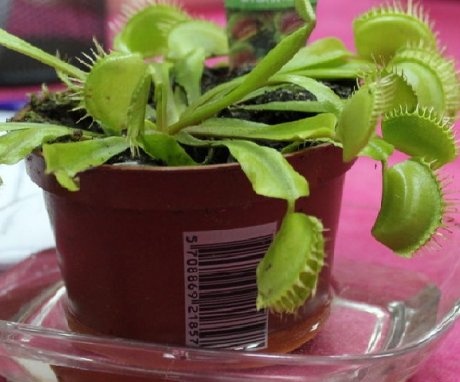
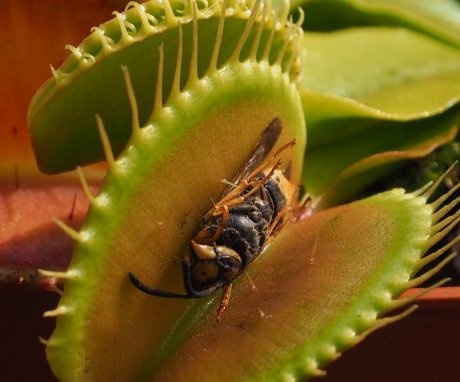
Somehow, not every florist will dare to keep a predatory plant at home, and even catch insects for him to live. In appearance, of course, this is a very unusual plant, but I would not put such a flower on my windowsill for sure.
I always wanted some unusual plant for myself at home. I decided to buy Venus Flytrap. I ordered the seeds, grew them easily, there were no difficulties. But somehow the flycatcher did not impress me. As a result, I gave it to her friend, and I raised myself a bashful Mimosa from the seeds. Wow, how afraid she is, when she is touched, she immediately moves the leaves.
A very interesting flower, I would love to try to plant one, but since I have a cat and children, I don’t risk it yet. And of course it looks very unusual. And it is not easy to care for.
I have long dreamed of having this plant at home. I can artificially create conditions for normal cultivation. The problem is feeding.
I live in the Far North, in Norilsk. Warm months: June, July, August - when mosquitoes, midges, flies appear.
How to feed a flower for nine winter months?
Can a Venus flytrap be fed with frozen insects?